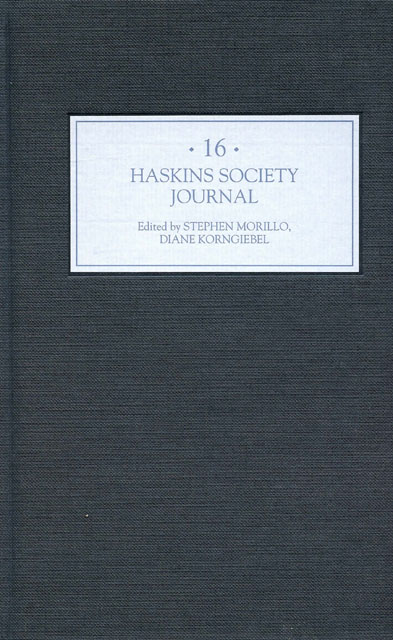Book contents
- Frontmatter
- Contents
- Editor’s Note
- Abbreviations
- 1 Hallucinations of Power: Climates of Fright in the Early Twelfth Century
- 2 Sites and Occasions of Peacemaking in England and Normandy, c. 900–c. 1150
- 3 Trans-border Transactions: Patterns of Patronage in Anglo-Norman Wales
- 4 Lay Piety, Confessional Directives and the Compiler’s Method in Late Anglo-Saxon England
- 5 Furor Teutonicus. A Note on Ethnic Stereotypes in Suger’s Deeds of Louis the Fat
- 6 Law and Theology in Gilbert of Foliot’s (c. 1105/10–1187/88) Correspondence
- 7 A Lost Law of Henry II: The Assize of Oxford and Monetary Reform
- 8 The Renaissance of the Twelfth Century Before Haskins
- 9 ‘Hobbes’, ‘Dogs’ and Politics in the Ireland of Lionel of Antwerp, c. 1361–6
1 - Hallucinations of Power: Climates of Fright in the Early Twelfth Century
Published online by Cambridge University Press: 23 March 2023
- Frontmatter
- Contents
- Editor’s Note
- Abbreviations
- 1 Hallucinations of Power: Climates of Fright in the Early Twelfth Century
- 2 Sites and Occasions of Peacemaking in England and Normandy, c. 900–c. 1150
- 3 Trans-border Transactions: Patterns of Patronage in Anglo-Norman Wales
- 4 Lay Piety, Confessional Directives and the Compiler’s Method in Late Anglo-Saxon England
- 5 Furor Teutonicus. A Note on Ethnic Stereotypes in Suger’s Deeds of Louis the Fat
- 6 Law and Theology in Gilbert of Foliot’s (c. 1105/10–1187/88) Correspondence
- 7 A Lost Law of Henry II: The Assize of Oxford and Monetary Reform
- 8 The Renaissance of the Twelfth Century Before Haskins
- 9 ‘Hobbes’, ‘Dogs’ and Politics in the Ireland of Lionel of Antwerp, c. 1361–6
Summary
Orderic Vitalis, without whom, I suspect, the Charles Homer Haskins Society would not exist, wrote the following words about the beginnings of renewed conflict in England and Normandy after the Conquest:
‘In truth, since the adversary of mankind stalks the earth like a raging lion, seeking those whom he might gnash to pieces with the teeth of his cruelty, so once again a great disturbance arose amongst the English and Normans and the perfidious Scourge [Erinis] long raged to the detriment of many.’
Two things interest me here, both of them couched in striking metaphorical verbiage, not really Orderic's own; neither displays the slightest anxiety about plagiarism. First, the trope of the savage lion copied from 1 Peter is clearly meant to convey the emotion of fear, not to say terror; and the terror of Orderic's raging lion, I would suggest, is akin to that of unseen terrorists in our society. Indeed, if I may mix Orderic's metaphors, the leo rugiens of 9/11 becomes the Erinis of terrorists in our midst. Secondly, it also interests me that Orderic's Scourge (Fury) is a ‘disturbance’ (turbatio) that ‘rages’ (sevit) in Normandy and England.
Orderic says that the fear and the fury were related. Was he right? Let me try to answer this question – or, better, just try to contribute towards an answer – by examining five texts dating from Orderic's lifetime that seem pertinent to me. At least one scholar who heard this lecture questioned that pertinence, pointing out that all five of these texts were written by monks. That fact would not have troubled Charles Homer Haskins, I suspect, but the climate of critical reading has changed. Whether this is a matter of weather or of standards is a question I shall address at the end.
Texts
So first a few words about my texts. All are well known, and most have figured in recent studies of medieval culture, notably those by Jacques Le Goff and Jean-Claude Schmitt, though to my knowledge no one has commented on just this array of five. The most famous one, and first in chronological order, is Orderic's story of the Norman priest Walchelin. According to Orderic, who wrote this section around 1132, in January 1091 this priest was on his way home from a parish visitation when he heard what sounded like an army overtaking him.
- Type
- Chapter
- Information
- The Haskins Society Journal2005. Studies in Medieval History, pp. 1 - 11Publisher: Boydell & BrewerPrint publication year: 2006



